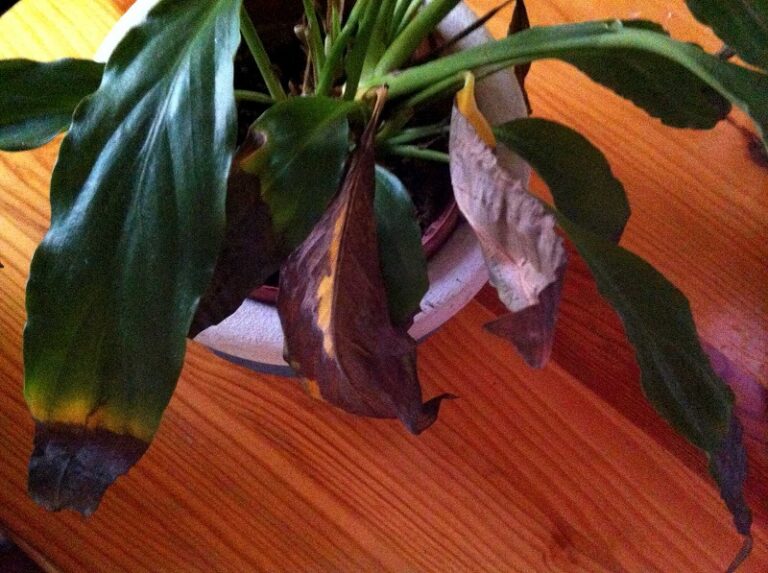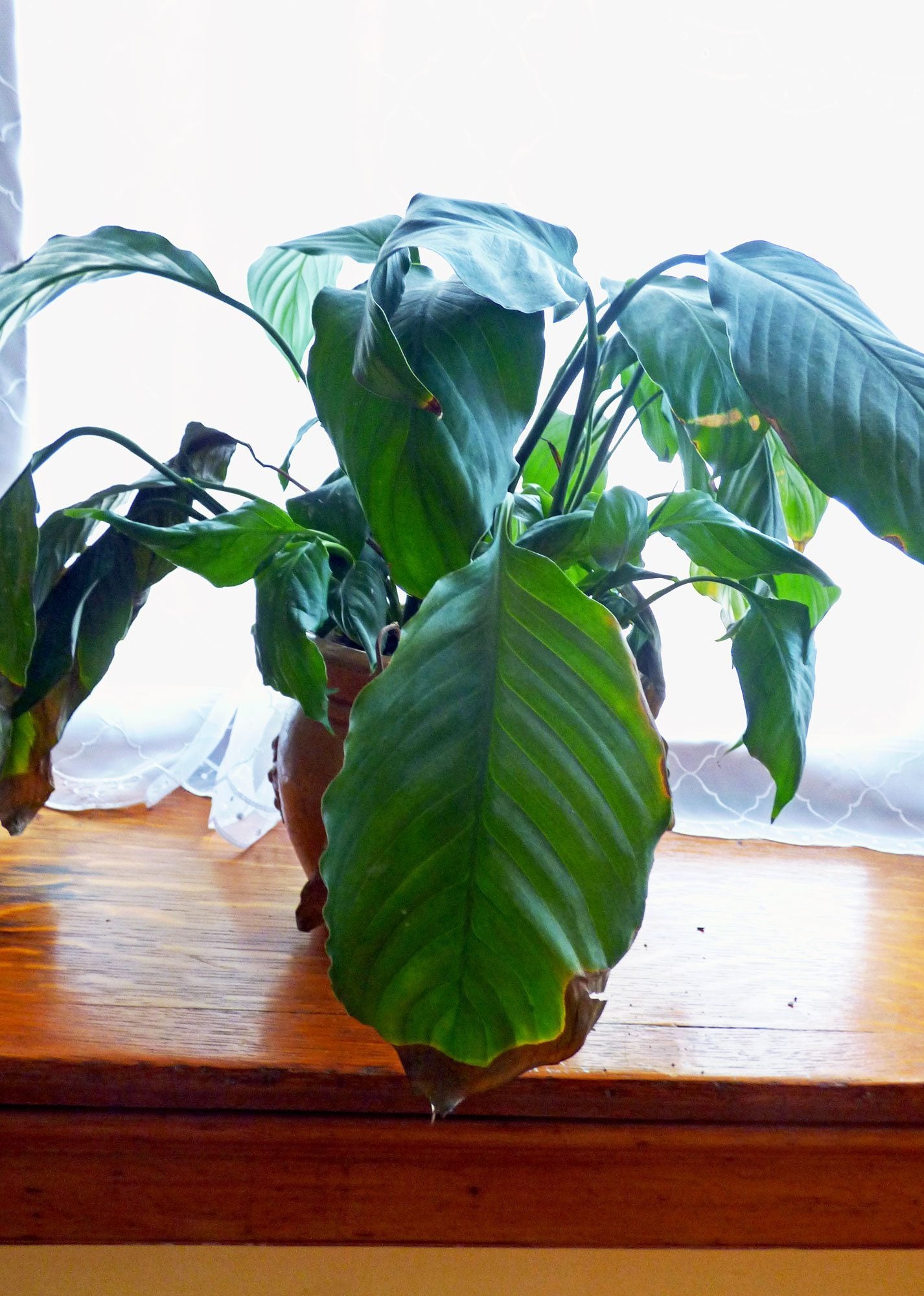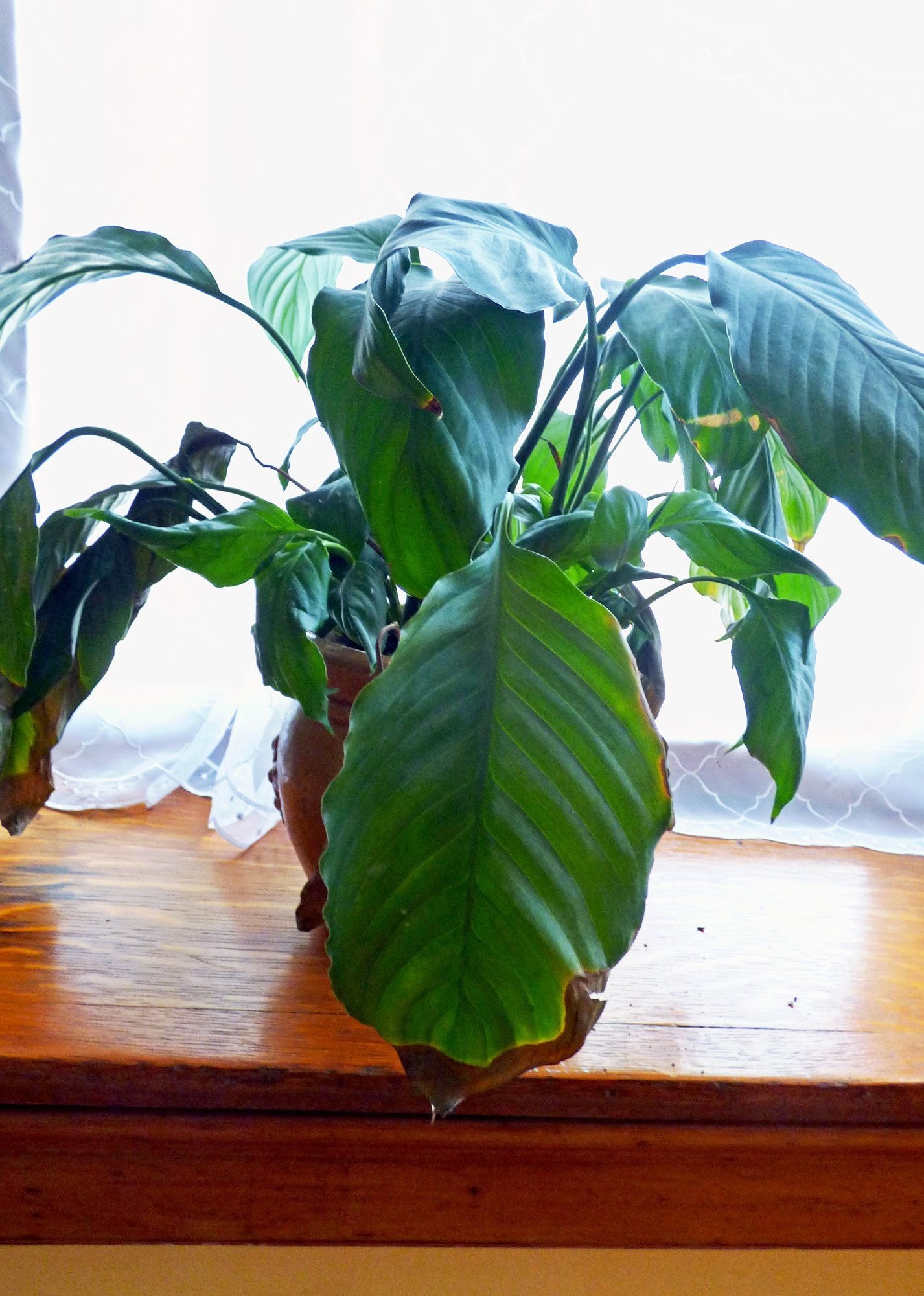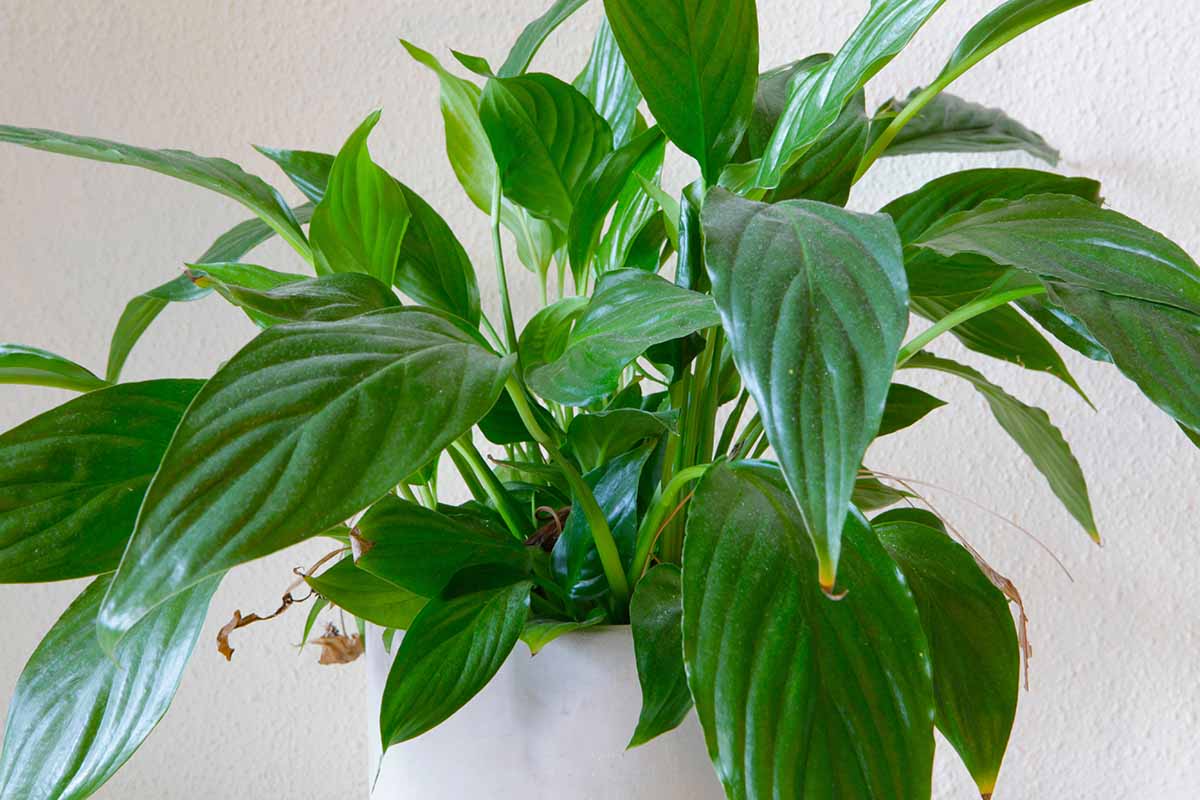Why Are My Peace Lily Leaves Turning Brown?
Peace lily leaves turning brown at the tips can be a frustrating and concerning issue for plant enthusiasts. There are several reasons why this may be happening, and understanding the underlying cause is crucial to addressing the problem. Overwatering is a common mistake that can lead to brown tips on peace lily leaves. When the soil is consistently waterlogged, the roots may become rotting, causing the leaves to turn brown and wilt. On the other hand, underwatering can also cause brown tips, as the plant may not be receiving enough moisture to sustain its growth.
Exposure to direct sunlight can also cause peace lily leaves to turn brown at the tips. While peace lilies can tolerate some direct sunlight, prolonged exposure can cause the leaves to become scorched and brown. Additionally, nutrient deficiencies can also contribute to brown tips on peace lily leaves. A lack of essential nutrients such as nitrogen, iron, and magnesium can cause the leaves to become discolored and develop brown tips.
It’s essential to note that peace lily leaves turning brown at the tips can also be a natural process. As the plant grows and matures, older leaves may naturally turn brown and die off as new growth emerges. However, if the browning is widespread or accompanied by other symptoms such as yellowing or droopy leaves, it may indicate an underlying issue that needs to be addressed.
To address the issue of peace lily leaves turning brown at the tips, it’s crucial to identify the underlying cause. By understanding the reasons behind the browning, you can take corrective action to prevent further damage and promote healthy growth. In the next section, we’ll explore how to diagnose the underlying cause of brown tips on peace lily leaves.
How to Diagnose the Underlying Cause of Brown Tips
Diagnosing the underlying cause of brown tips on peace lily leaves requires a thorough examination of the plant’s environment, pests, and soil moisture. To start, inspect the plant’s environment and check for any signs of extreme temperatures, drafts, or exposure to direct sunlight. Make sure the plant is placed in a spot with bright, indirect light and maintain a consistent temperature between 65-80°F (18-27°C).
Next, check the plant for any signs of pests, such as spider mites, mealybugs, or scale. These pests can cause brown tips on peace lily leaves by sucking the sap from the plant, causing damage to the leaves. Inspect the underside of the leaves and the soil for any signs of pests, and treat the plant with insecticidal soap or neem oil if necessary.
Examine the soil moisture by sticking your finger into the soil up to the first knuckle. If the soil feels dry, it may be a sign of underwatering, while consistently waterlogged soil can indicate overwatering. Check the soil moisture regularly to ensure the plant is receiving the right amount of water.
Another important factor to consider is the plant’s nutrient levels. Peace lilies require a balanced fertilizer to promote healthy growth, and a lack of essential nutrients can cause brown tips on the leaves. Check the fertilizer label to ensure it contains the necessary nutrients, and follow the instructions for application.
By following these steps, you can diagnose the underlying cause of brown tips on your peace lily leaves and take corrective action to prevent further damage. In the next section, we’ll discuss the importance of proper watering techniques for peace lilies.
The Importance of Proper Watering Techniques
Proper watering techniques are crucial for the health and well-being of peace lilies. Overwatering and underwatering are two of the most common mistakes that can lead to peace lily leaves turning brown at the tips. When the soil is consistently waterlogged, the roots may become rotting, causing the leaves to turn brown and wilt. On the other hand, underwatering can cause the leaves to become dry and brittle, leading to brown tips.
To water peace lilies correctly, it’s essential to check the soil moisture regularly. Stick your finger into the soil up to the first knuckle, and if the soil feels dry, it’s time to water. Water the plant thoroughly, making sure the pot drains well to prevent waterlogged soil. Allow the top 1-2 inches of soil to dry out between waterings, and avoid getting water on the leaves or crown of the plant.
The frequency of watering will depend on the environment and time of year. During the spring and summer months, peace lilies may require more frequent watering, while during the fall and winter months, they may require less. It’s also important to consider the humidity and temperature of the environment, as these factors can affect the plant’s watering needs.
Using a well-draining potting mix can also help prevent overwatering. A mix that contains perlite, vermiculite, or sand can help improve drainage and prevent water from accumulating in the soil. Additionally, avoiding getting water on the leaves or crown of the plant can help prevent fungal diseases that can cause brown tips.
By following these tips, you can ensure that your peace lily is receiving the right amount of water and prevent overwatering and underwatering. In the next section, we’ll discuss the importance of nutrient deficiencies and how to identify and address them.
Nutrient Deficiencies: How to Identify and Address Them
Nutrient deficiencies are a common cause of peace lily leaves turning brown at the tips. Peace lilies require a balanced diet of essential nutrients to maintain healthy growth and prevent browning. Nitrogen, iron, and magnesium are three essential nutrients that play a crucial role in maintaining the health and beauty of peace lilies.
Nitrogen deficiency is a common cause of yellowing or browning leaves on peace lilies. Nitrogen is essential for the production of chlorophyll, which gives plants their green color. Without sufficient nitrogen, the leaves may turn yellow or brown, and the plant may become stunted. To address nitrogen deficiency, use a balanced fertilizer that contains nitrogen, phosphorus, and potassium.
Iron deficiency can also cause peace lily leaves to turn brown at the tips. Iron is essential for the production of chlorophyll and the transport of oxygen throughout the plant. Without sufficient iron, the leaves may turn yellow or brown, and the plant may become weakened. To address iron deficiency, use a fertilizer that contains iron, such as iron sulfate or iron chelate.
Magnesium deficiency is another common cause of peace lily leaves turning brown at the tips. Magnesium is essential for the production of chlorophyll and the transport of nutrients throughout the plant. Without sufficient magnesium, the leaves may turn yellow or brown, and the plant may become stunted. To address magnesium deficiency, use a fertilizer that contains magnesium, such as magnesium sulfate or magnesium chelate.
To prevent nutrient deficiencies, it’s essential to use a balanced fertilizer that contains all the essential nutrients that peace lilies need. A balanced fertilizer will provide the necessary nutrients to promote healthy growth and prevent browning. Additionally, regular soil testing can help identify any nutrient deficiencies and allow for prompt correction.
By addressing nutrient deficiencies, you can help prevent peace lily leaves from turning brown at the tips and promote healthy growth. In the next section, we’ll discuss the importance of pruning and grooming peace lilies to remove brown tips and promote healthy growth.
Pruning and Grooming: How to Remove Brown Tips and Promote Healthy Growth
Pruning and grooming are essential for maintaining the health and beauty of peace lilies. Removing brown tips and dead leaves can help prevent the spread of disease and encourage healthy growth. To prune your peace lily, use a pair of clean scissors or pruning shears to remove any dead or damaged leaves or flowers.
When pruning, make sure to cut just above a node, which is the point where a leaf meets the stem. This will help the plant heal quickly and reduce the risk of infection. Remove any dead or damaged leaves or flowers, and trim back any leggy stems to encourage bushy growth.
In addition to pruning, regular grooming can help keep your peace lily looking its best. Dust the leaves regularly with a soft-bristled brush or a damp cloth to remove any dust or debris. This will help keep the leaves clean and prevent the buildup of pests or diseases.
Peace lilies also benefit from regular repotting. Every 2-3 years, repot your peace lily in a slightly larger pot with fresh, well-draining soil. This will give the roots room to grow and help prevent the soil from becoming depleted of nutrients.
By pruning and grooming your peace lily regularly, you can help promote healthy growth and prevent future browning. Remember to always use clean scissors or pruning shears, and make cuts just above a node to prevent damaging the plant. With regular care and attention, your peace lily can thrive and remain a beautiful and elegant addition to your home.
In the next section, we’ll discuss the common pests and diseases that can cause brown tips on peace lily leaves, and provide guidance on how to identify and treat them.
Common Pests and Diseases That Can Cause Brown Tips
Peace lily leaves turning brown at the tips can also be caused by pests and diseases. Spider mites, mealybugs, and root rot are common pests and diseases that can cause brown tips on peace lily leaves.
Spider mites are tiny, spider-like insects that feed on the sap of peace lily leaves. They can cause brown tips and yellowing leaves, and can be identified by the presence of fine webbing on the leaves. To treat spider mites, use a gentle insecticidal soap or neem oil, and make sure to spray the undersides of the leaves where the mites tend to congregate.
Mealybugs are small, white insects that feed on the sap of peace lily leaves. They can cause brown tips and yellowing leaves, and can be identified by the presence of a white, cottony substance on the leaves. To treat mealybugs, use a gentle insecticidal soap or neem oil, and make sure to spray the undersides of the leaves where the mealybugs tend to congregate.
Root rot is a common disease that can cause brown tips on peace lily leaves. It is caused by overwatering, which can lead to the roots of the plant rotting. To treat root rot, repot the plant in fresh, well-draining soil, and make sure to water the plant carefully to avoid overwatering.
Other diseases that can cause brown tips on peace lily leaves include leaf spot and crown rot. Leaf spot is a fungal disease that causes small, brown spots to form on the leaves, while crown rot is a bacterial disease that causes the crown of the plant to rot. To treat these diseases, use a fungicide or bactericide, and make sure to remove any infected leaves or stems.
By identifying and treating pests and diseases, you can help prevent peace lily leaves from turning brown at the tips. In the next section, we’ll discuss how to create a peace lily-friendly environment, including the ideal temperature, humidity, and lighting conditions.
How to Create a Peace Lily-Friendly Environment
Creating a peace lily-friendly environment is crucial for maintaining the health and beauty of your plant. Peace lilies prefer bright, indirect light, but direct sunlight can cause the leaves to become scorched and turn brown. To provide the right amount of light, place your peace lily near an east- or west-facing window, or use a sheer curtain to filter the sunlight.
Temperature is also an important factor to consider when creating a peace lily-friendly environment. Peace lilies prefer temperatures between 65-80°F (18-27°C), and sudden changes in temperature can cause stress to the plant. To maintain a consistent temperature, keep your peace lily away from heating or cooling vents, fireplaces, and drafty windows.
Humidity is another important factor to consider when creating a peace lily-friendly environment. Peace lilies prefer a humid environment, but they can adapt to average humidity levels. To maintain the right level of humidity, you can place the peace lily on a tray filled with water and pebbles, or use a humidifier nearby.
Finally, peace lilies prefer well-draining soil and a pot that is slightly larger than the plant’s root system. To create a peace lily-friendly environment, use a potting mix that is specifically designed for tropical plants, and avoid overwatering, which can cause the roots to rot.
By creating a peace lily-friendly environment, you can help prevent peace lily leaves from turning brown at the tips and promote healthy growth. In the next section, we’ll summarize the key takeaways from the article and provide additional tips on how to prevent future browning and promote long-term peace lily care.
Preventing Future Browning: Tips for Long-Term Peace Lily Care
By following the tips and guidelines outlined in this article, you can help prevent peace lily leaves from turning brown at the tips and promote long-term peace lily care. Remember to inspect your plant regularly for signs of browning, and take corrective action promptly to prevent the problem from spreading.
In addition to the tips outlined in this article, there are several other things you can do to promote long-term peace lily care. One of the most important things is to provide your plant with a well-balanced fertilizer that contains all the necessary nutrients for healthy growth. You should also make sure to repot your peace lily every 2-3 years to provide fresh soil and a larger pot if necessary.
Another important thing to consider is the humidity level in your home. Peace lilies prefer a humid environment, but they can adapt to average humidity levels. To maintain the right level of humidity, you can place the peace lily on a tray filled with water and pebbles, or use a humidifier nearby.
Finally, make sure to protect your peace lily from extreme temperatures and drafts. Peace lilies prefer temperatures between 65-80°F (18-27°C), and sudden changes in temperature can cause stress to the plant. By following these tips and guidelines, you can help promote long-term peace lily care and prevent future browning.
By following the tips and guidelines outlined in this article, you can help promote long-term peace lily care and prevent future browning. Remember to always inspect your plant regularly for signs of browning, and take corrective action promptly to prevent the problem from spreading.







